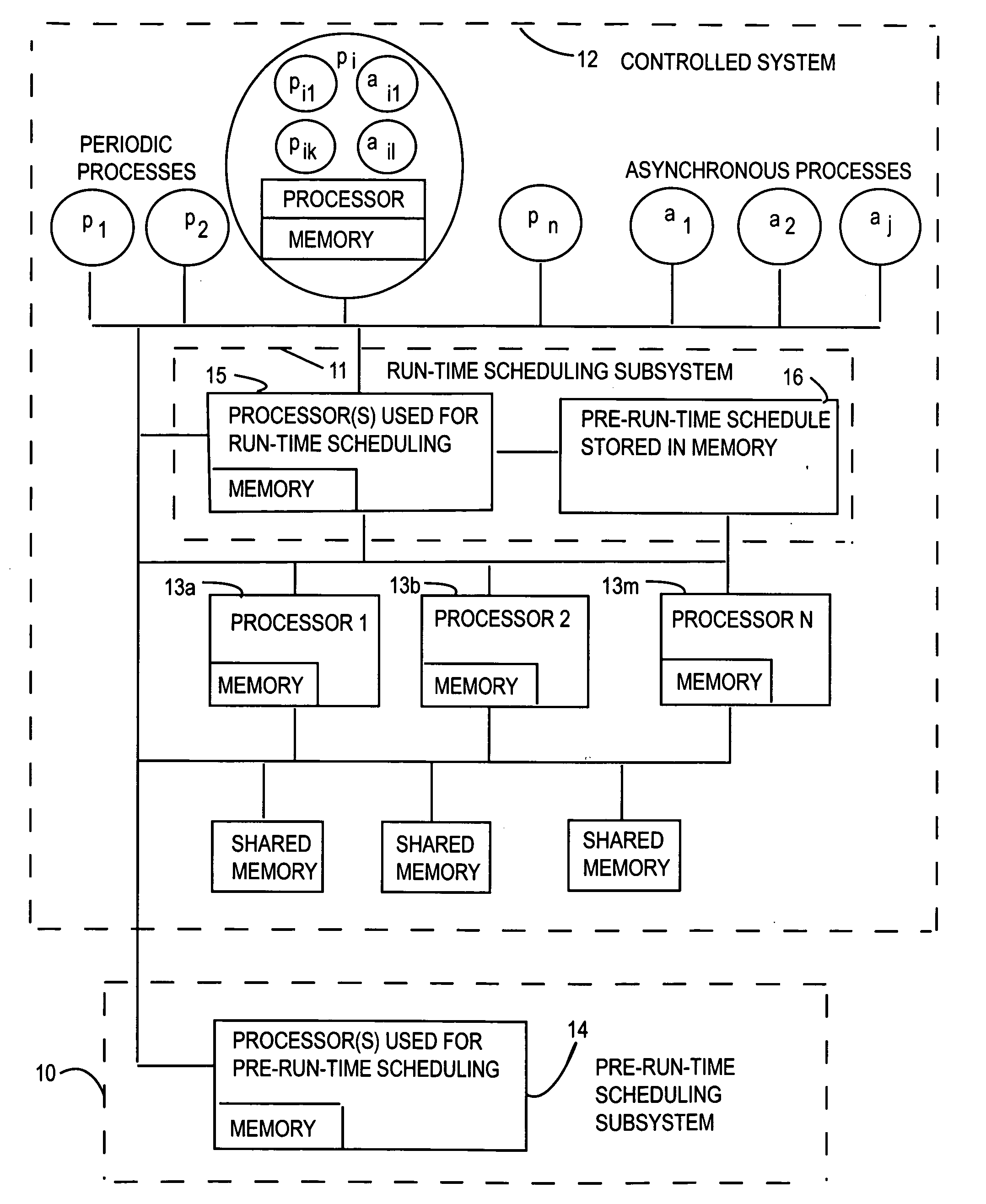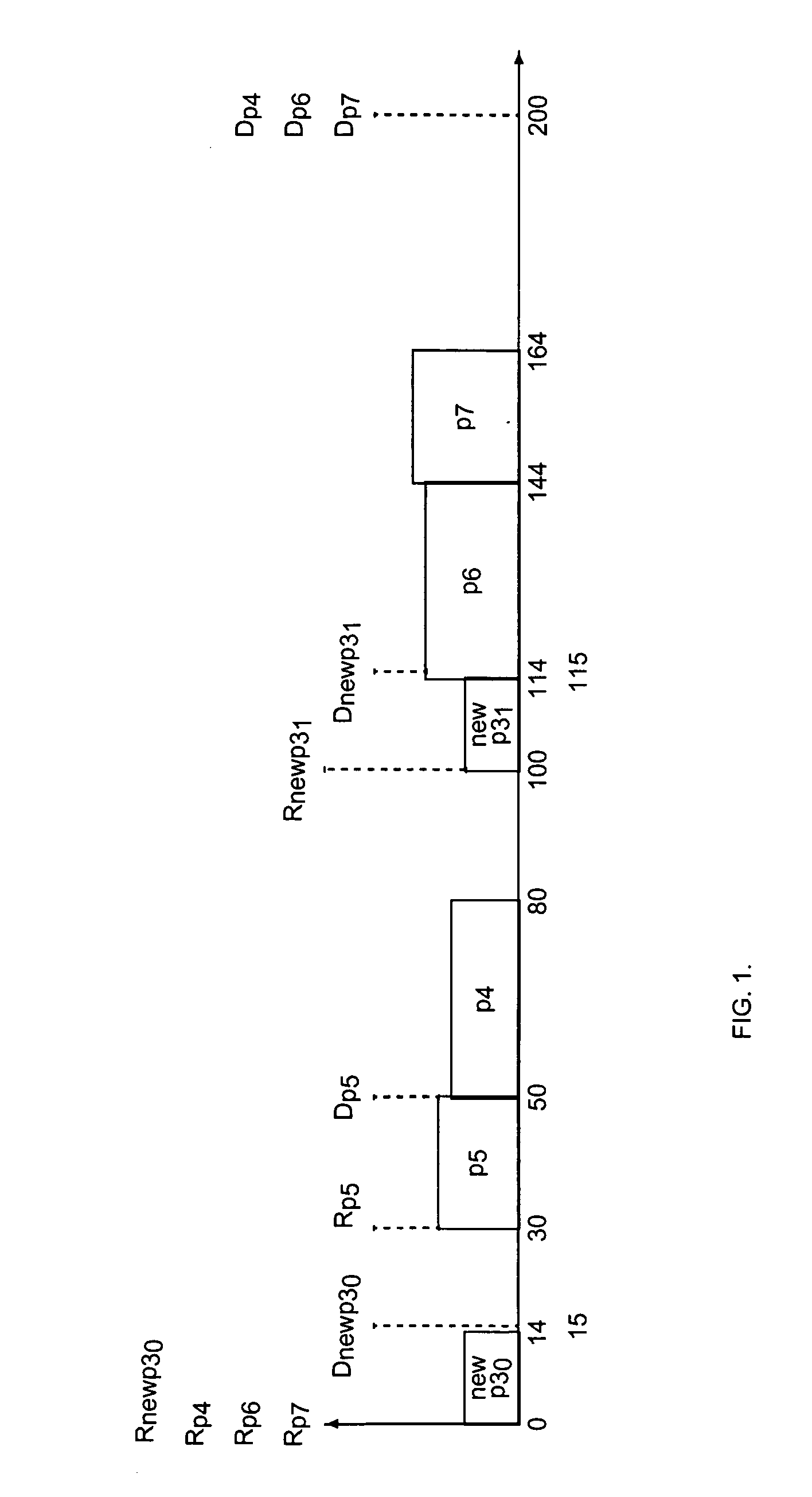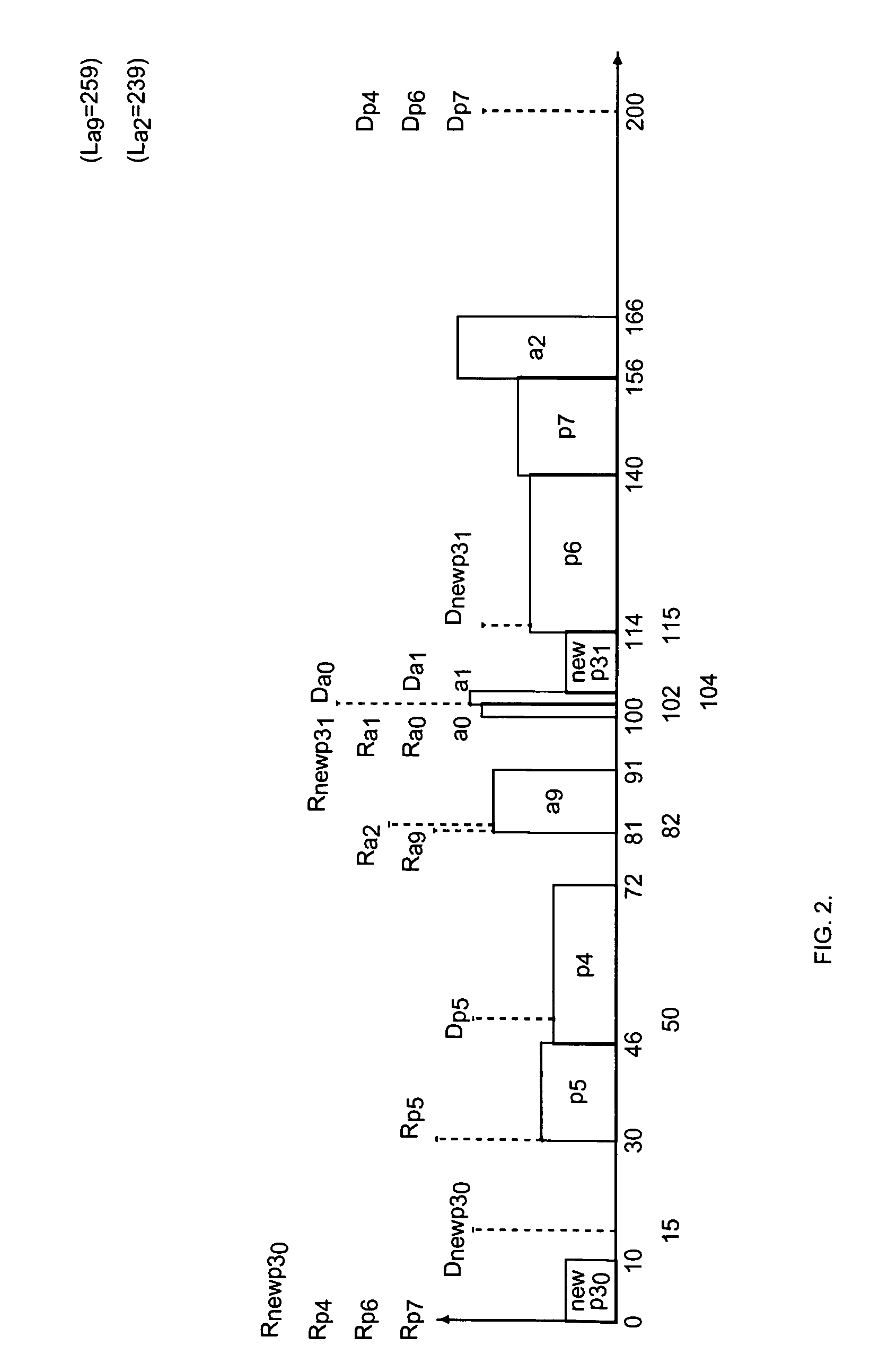Embedded, real-time systems with
high assurance requirements often must execute many different types of processes with complex timing and other constraints.
Some of the processes may have hard deadlines and some of them may have soft deadlines.
Some processes may have complex constraints and dependencies between them.
In this case, a process may not be able to start before those other processes are completed.
For some periodic processes, they may not be able to start immediately at the beginning of their periods.
In this case, those processes have
release time constraints.
(a) High run-
time overhead due to scheduling and context switching;
(b) Difficulty in analyzing and predicting the run-time behavior of the system;
(c) Difficulty in handling various application constraints and process dependencies;
(d) Low processor utilization.
High run-
time overhead is partly due to the fact that embedded, real-time applications are becoming more and more complex, with an ever increasing number of processes and additional constraints and dependencies between processes.
The amount of run-time resources consumed by the scheduler in order to compute the schedule, grows very rapidly as the number of processes and constraints increase.
In addition, since the priority scheduler does not know the schedule before run-time, it has to assume the worst case and save / restore complete contexts each time a process is preempted by another process.
The run-time behavior of the scheduler can be very difficult to analyze and predict accurately.
It was observed that because the
clock interrupt handler had a priority greater than any application task, even a high priority task could suffer long delays while
lower priority tasks are moved from one
queue to another.
Accurately predicting the scheduler overhead proved to be a very complicated task, and the estimated scheduler overhead was substantial, even though it was assumed that the system had a total of only 20 tasks, tasks did not have critical sections, and priorities are not to change.
Such difficulties would be many times greater if there existed additional complex application constraints that would have to be satisfied by the synchronization mechanism at run-time.
It is difficult to extend the schedulability analysis for
priority scheduling to take into account application constraints that frequently exist in real-time applications, such as precedence constraints, release times that are not equal to the beginning of their periods, offsets,
low jitter requirements (limits on the variation in time a computed result is output to the external environment from cycle to cycle), etc.
Despite considerable effort spanning more than a decade to extend the original PCP protocol to
handle additional constraints, not much has been accomplished to this end, as evidenced by the absence of methods that can satisfactorily deal with such constraints in the survey by Fidge mentioned above.
Additional application constraints increase the computational complexity of scheduling problems, which already have high computational complexity whenever processes contain critical sections.
When all the scheduling is performed at run-time, the scheduler does not have enough time to find solutions for
complex problems.
However, additional application constraints are most likely to conflict with the user assigned priorities.
It is not generally possible to map the many different execution orderings of processes that are required by the different application constraints in a large
complex system onto a rigid hierarchy of priorities.
Consequently, the system designer is faced with the impossible task of trying to simultaneously satisfy many different application constraints with one rigid hierarchy of priorities.
Because of the inherent constraints built into the fixed
priority scheduling model, (e.g. fixed priorities) and because scheduling is performed at run-time, attempts to take into account additional constraints typically result in suggestions that either are only applicable to a few very special cases, or make drastically simplifying assumptions, which significantly reduce schedulability, or are extremely complicated, making the run-time behavior of the system very difficult to analyze and predict.
This is largely due to the fact that when all scheduling activities are performed at run-time, the scheduler does not have enough time to find good solutions to complex scheduling problems, and can only afford to use crude, suboptimal methods that do not take into account all the available information.
Systems that use
priority scheduling methods have a much smaller chance of satisfying timing constraints, because priority-driven methods are only capable of producing a very limited subset of the possible schedules for a given set of processes.
This severely restricts the capability of priority-driven systems and methods to satisfy timing and resource sharing constraints at run-time.
Hence, using priority-driven systems may increase the cost of the system to non-competitive levels.
In contrast, when processes are scheduled at run-time, the time available to the scheduler is very limited.
This limits the ability of the scheduler to find a feasible schedule and to take into account the different types of constraints and knowledge about the system processes.
However, in the past, cyclic executives have mainly been constructed by hand, and are difficult to construct and maintain.
(1) Previously there did not exist any system or method that integrates the run-time scheduling of asynchronous processes with the pre-run-time scheduling of periodic processes, that could effectively satisfy exclusion relations, precedence relations, offsets and release times constraints between the periodic processes, as well as any exclusion relation between a periodic process and an asynchronous process, and any exclusion relation between two asynchronous processes, while making efficient use of available processor capacity, and maximizing the chances of satisfying all the timing constraints.
Previous systems and methods for scheduling periodic processes and asynchronous processes, either perform all the scheduling activities at run-time, or assume that any process can be preempted by any other process at any time (no exclusion relations can be enforced, so one cannot prevent certain data inconsistencies that are caused by more than one process simultaneously accessing shared data), or assume that all aperiodic processes have soft deadlines, or assume that all processes are non-preemptable, which reduces the system's flexibility in meeting deadlines, or use ad hoc schemes that do not make efficient use of available processor capacity, and reduce the chances of satisfying all the timing constraints.
Previous systems and methods use ad hoc methods that do not make the most efficient use of available processor capacity.
Such arbitrary constraints seriously
restrict the system's ability to meet complex timing constraints.
There are certain asynchronous processes that cannot be converted into periodic processes at all, or if converted, may take up far too much processor capacity compared with allowing them to remain asynchronous.
However, the technique described in the Mok article did not consider the case of non-zero offsets, that is, non-zero intervals between time 0, that is, the system
start time, and the beginning of their first periods.
Furthermore, the described technique only deals with one process.
When more than one process must be converted into periodic processes, the new periodic processes may have timing conflicts with each other and with the original set of asynchronous and periodic processes.
Previous systems and methods use ad hoc methods that do not make the most efficient use of available processor capacity.
Such arbitrary constraints seriously
restrict the system's ability to meet complex timing constraints.
 Login to View More
Login to View More  Login to View More
Login to View More 


